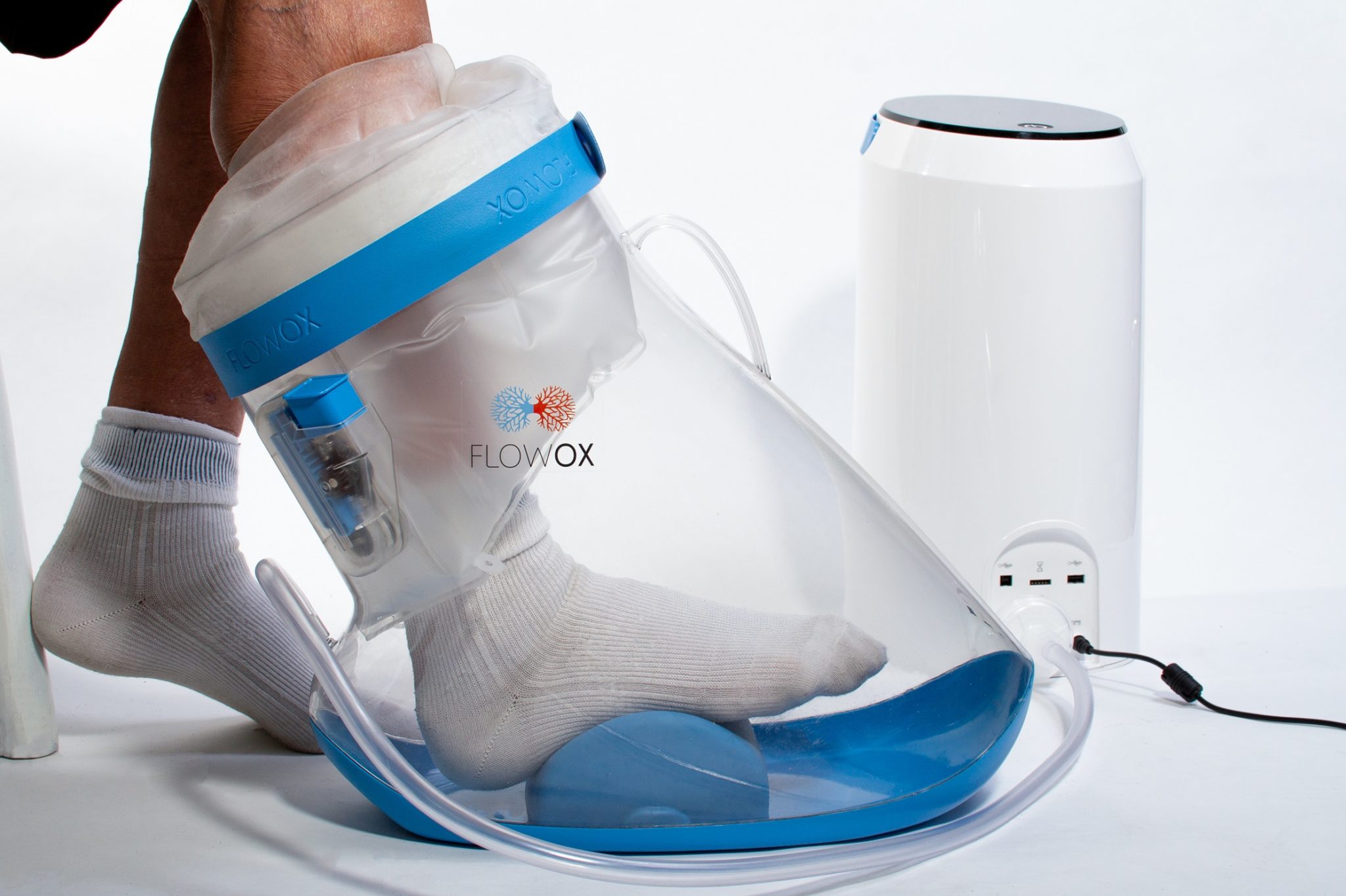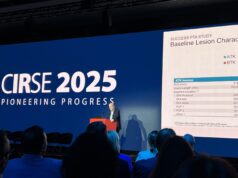
FlowOx therapy (Otivio) delivered as a single annual dose may be a cost-effective treatment for peripheral arterial disease (PAD), a recent study published in PLOS ONE reports. The authors, Victory Ezeofor (Centre for Health Economics and Medicines Evaluation, Bangor University, Bangor, Wales, UK) et al, found that the therapy improved health outcomes and reduced treatment costs in their modelled cohort. The effectiveness and cost-effectiveness of FlowOx therapy is susceptible to disease severity, adherence, dose, and treatment cost, they write, concluding that “Research assessing the impact of FlowOx therapy on NHS [National Health Service] resource use is needed in order to provide a definitive economic evaluation”.
FlowOx therapy is a novel negative-pressure chamber system intended for home use to increase blood flow, reduce pain, and improve wound healing for patients with peripheral arterial disease (PAD) and chronic limb-threatening ischaemia (CLTI), a disease which can lead to tissue loss, gangrene. amputation, and death.
Describing this new system, Ezeofor and colleagues say: “The FlowOx therapeutic device is a CE marked medical device. The therapy is intended for use by patients who present with reduced blood flow (ankle brachial pressure index [ABPI] <0.8) or symptoms of claudication in advance of surgical intervention, but has also been used for treatment of patients with critical limb ischaemia post intervention. The device is likely to have its biggest impact in patients who are in a stable but critical condition with few treatment alternatives other than palliative care, chronic wound care, or amputation. The device comprises a wearable boot, inflatable padding, and seal, which together act as a chamber, allowing an intermittent negative pressure to be applied to the leg below the knee. It is intended to be used in a clinical or domestic environment. The padding and seal are designed to ensure that the limb is suspended within the boot (therefore preventing pressure points between the skin and the boot) and that an adequate vacuum can form once the negative pressure is applied. The boot is connected to a control unit which generates a pulsed ‘on-off’ negative pressure (-40 mmHg and ambient pressure for 10 second and seven seconds, respectively). The pressure cycle is pre-set and cannot be changed by the user. Patient use data is recorded directly by the control unit.”
As part of an international European study to assess the effectiveness of FlowOx therapy compared to standard care in lower limb PAD patients (including intermittent claudication, CLTI, and lower leg ulcers), Ezeofor et al developed an economic model to explore the cost-effectiveness of the therapy in a modelled cohort of patients with PAD. The project was funded by the European Commission through the Horizon 2020 Fast Track to Innovation funding scheme.
The research team constructed a Markov model to assess the relative cost-effectiveness of FlowOx therapy compared to standard care in lower limb PAD patients with intermittent claudication or CLTI. The model used data from two European trials of FlowOx therapy and published evidence on disease progression. From an NHS analysis perspective, three FlowOx therapy scenarios were modelled by adjusting the dose of FlowOx therapy and the amount of other care received alongside it, in comparison to standard care. The scenarios were: FlowOx therapy plus nominal care; FlowOx therapy only; FlowOx therapy plus standard care.
“Markov modelling allows complex real-life events to be represented in a simplified health state form,” the authors explain. “In our Markov model, we followed a cohort of 1,000 patients moving through defined Markov states and time periods. The modelled patients can remain in their current health state, move to another health state, or reach the ‘absorbed’ state (a health state with no cost or health benefit, for example, dead in this model) according to certain transition probabilities. […] Our aim was to create a realistic but simplified model, which took account of the complexity of the issue, whilst also allowing ease of modelling.”
Results of the primary Markov model analysis are presented as cost per quality-adjusted life years (QALYs) gained, for a three-month cycle and over a time horizon of five years. The results from the modelled 1,000 Monte Carlo simulations indicate that FlowOx therapy, regardless of whether standard, nominal, or no additional care was provided, was a cost-effective treatment within this hypothetical cohort, based on a single three-month dose of the intervention per year, the investigators state. They add that the probabilistic sensitivity analysis of this cost-effectiveness model “gave a robust procedure for the analysis of parameters for uncertainty”.
In the base case analysis, consisting of FlowOx therapy plus nominal care, the cost estimates were £12,704 for a single dose of FlowOx therapy per annum, as compared with £15,523 for standard care. FlowOx therapy patients gained 0.27 additional QALYs compared to standard-of-care patients. This equated to a dominant incremental cost-effectiveness ratio per QALY gained.
The probability of cost-effectiveness at different willingness to pay (WTP) thresholds were also investigated. At the National Institute for Care Excellence (NICE) threshold WTP of £20,000 and £30,000 per QALY gained, FlowOx therapy in addition to standard care had a 0.80 and 1.00 probability of being cost-effectiveness, respectively.
Summarising their results, Ezeofor et al write: “From an NHS perspective, our base case analysis of FlowOx therapy plus nominal care, delivered as a single annual dose, was cost-effective in terms of QALYs gained and cost saving at a payer threshold of £20,000 to 30,000 per QALY, when compared to standard care. Potential cost-savings are likely to come from substitution of FlowOx therapy for ongoing direct care from nurses, health visitors, and other healthcare professionals. The results from the base case analysis were robust following the conduct of deterministic and probabilistic sensitivity analysis. Interestingly, continuous FlowOx therapy does not appear to be cost-effective, due to significantly increased cost (assuming health outcomes are not significantly better than the single dose intervention).”













